The EOS R5 C camera features the Same CMOS sensor as the EOS R5. It employs the DIGIC X Image Processor to enhance the speed of operations. This means fast, efficient performance and phenomenal image quality.
Supports 8K/60P Internal RAW Recording
The 8K sensor and DIGIC X processor produce high-quality video at up to 8K/60P. Use of the Cinema RAW Light format with its high-efficiency mode enables internal card recording without an external recorder.
ISO range of 100-51200; Expandable to 102400*1
Delivering high standard and expanded ISOs (for still images), and a score of options to help enhance shooting in varied and fast-changing lighting situations, the EOS R5 can shoot at expanded sensitivities down to ISO 50 (L) and up to 102400 (H).
8K Sensor and DIGIC X Processor
The EOS R5 C camera is the first Cinema EOS System Camera to provide internal 8K (8192x4320) 60P RAW recording. 8K video offers outstanding definition and realism with 16 times the resolution of full HD video.
This enables unprecedented capabilities in video expression and highly flexible workflows, such as 4K cropping from 8K footage. The EOS R5 C camera can also record 8K video in the highly versatile MP4 format. Lighter, smaller proxy video files can also be recorded while shooting 8K.
HDMI 8K RAW output to cmpatible recorders
The EOS R5 C camera supports RAW output via HDMI and ProRes RAW recording with compatible external recorders such as Atomos devices*. By connecting the EOS R5 C camera with a supported external recorder, users can shoot in Apple ProRes RAW at up to 8K 30P.
Proxy data can also be simultaneously recorded to an SD card in-camera, providing efficient post-production operations. *Only Atomos NINJA V+ is supported as of January 2022. A separate HDMI cable is required to connect to the NINJA V+.
Up to 4K 120P Slow and Fast Motion Recording Mode in 4:2:2 10-bit
The EOS R5 C camera can record High Frame Rate (HFR) movies at up to 120P at 4K resolution (4096x2160/3840x2160) in 4:2:2 10-bit without cropping the sensor.
Amazing for shooting scenes full of fast-paced action, the EOS R5 C camera’s fast and intuitive autofocus remains enabled even during HFR recording, making it ideal when shooting from a gimbal or drone, delivering outstanding focus accuracy at HFR or at common frame rates.
Expanded interface for professional needs
The EOS R5 C camera provides a Timecode input/output terminal for easy synchronization when shooting with multiple cameras and other interfaces. A cable protector is also included as standard to prevent cable disconnection or damage to the terminal.
Canon’s Multi-function shoe with digital audio interface supports the optional TASCAM CA-XLR2d-C professional audio XLR microphone adapter for up to 4-channel audio. This optional accessory adds two full-sized XLR terminals with phantom power and shotgun mic mount.
Carries on the ergonomic EOS design
The EOS R5 C camera’s body design is incredibly compact and lightweight. When paired with a Canon RF lens (or EF lens using the Mount Adapter), it offers outstanding performance that fits easily and comfortably in your hand, making handheld shooting a breeze.
Its Electronic Viewfinder is optically extended, for eye-level viewing similar to the conventional EOS R5 camera, and it uses the same ergonomic grip design.
Internal cooling fan enables non-stop 8K/60P recording
The EOS R5 C camera features a cooling fan built into the body, forcing out the heat from inside. This enables continuous and virtually limitless shooting of high-definition 8K/60P video without interruption[i].
Simultaneously record different formats
The EOS R5 C camera is capable of recording two independent video files simultaneously, such as Cinema RAW Light and MP4 at various resolutions including 4K and HD, as well as lightweight proxy files for various professional workflows.
Full-featured 13 assignable buttons
The EOS R5 C camera is designed with operational flexibility in mind, conforming to each individual professional workflow, including 13 marked, assignable buttons that allow for user-friendly customized operation.
[1] Wireless connectivity for the transfer of video files requires the use of the Canon WFT-R10 wireless transmitter.
[i] Continuous recording of video is dependent upon media capacity and continuous power to the camera. Continuous power options include Canon’s PD-E1 USB power adapter (sold separately), or the DR-E6C DC coupler (sold separately) combined with the CA-946 compact power adapter (sold separately)
[1] The EOS R5 C camera does not feature In-Body Image Stabilization (IBIS). Electronic IS during video recording detects camera/lens movement or shake, and digitally moves the image on the image sensor to counter the detected movement, but the image sensor itself does not physically move.
[1] Effectiveness varies depending on the subject. In some cases, dogs, cats or birds may not be detected, while some animals other than dogs, cats or birds may be detected.























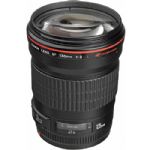







































































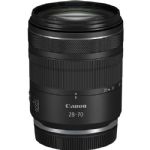
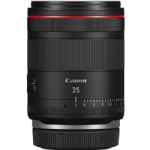






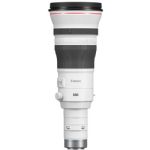




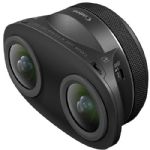
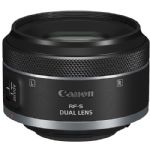

























![Tamron SP AF 17-50mm f/2.8 XR Di II LD [IF] Lens for Canon](/files/MA/product/small/WEB368210.jpg)




















































































































































































